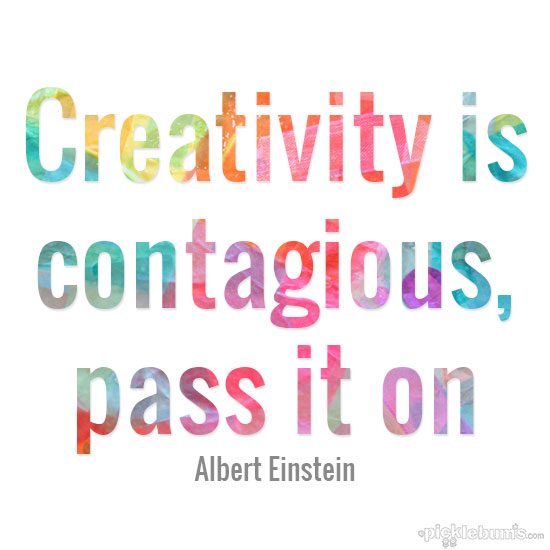As we start to plan the next Sandbox Summit, my thoughts inevitably turn to creativity—the out-of-the-box thinking that encourages exploration of new ideas and solutions. What makes people creative? Are they born with the gene or is it an acquired skill? If creativity can be taught, can it be un-taught? If it’s nurtured in Emilia Reggio or Montessori classrooms, or by using programs such as Scratch, and games like Minecraft, is it squashed by lessons that rely on rote or schedules that leave no time for daydreaming? Theories abound. But as I learned, with many things considered “creative,” there is not just one answer. For every study I found promoting creativity as originating in our DNA, I found an equally compelling argument about the power of creative environments.
A study done at Cornell in 2009 determined that artistically creative people actually have a specific genetic trait. A subsequent project at the University of Helsinki concurred that creativity is in our DNA. Focusing on music, the researchers found that the presence of a cluster of genes which helps the brain break and form new connections, directly correlated with musical creativity.
In the nurture camp, a 2013 study by Kathleen D. Vohs at University of Minnesota explored the idea of different environments encouraging different behavior. A series of three experiments bore out the hypothesis that tidy environments lead people towards toward tradition and convention, whereas disorderly environments encourage breaking away from the expected. On a practical level, as many of our offices are restructured into neat, minimalist spaces, the opportunities for personal, messy space diminish. It makes me wonder whether the sleek, impersonal areas that now make up so many new offices are sufficiently counterbalanced by the shared, open space that encourages creative collaboration.
In addition to our own brains and messy environments, downtime is also a critical indicator of creativity. In a study looking at morning people vs. night owls and the effect of problem solving, researchers found that the optimal insights came at the subjects’ least optimal time of day, suggesting that creative thoughts are more likely to flow when inhibitory brain processes are at their weakest. Other research revealed that watching funny videos (yes, at work!) that put viewers in a positive mood, increased “cognitive flexibility,” encouraging more creative thinking, while videos that produced a negative mood had the opposite effect.
Happily, the importance of creativity as a 21st century skill is being recognized more and more. Words such as “hacker” or “tinkerer” that just a few years ago had a negative connotation, now inspire awe. Major movements including TED, HATCH, and Maker Faires , to name just a few, celebrate innovative thinking.
While I still don’t know whether creativity is natural or nurtured, I do know that creativity happens through inspiration and collaboration. Whether it’s looking at someone’s work and deciding to build a better mousetrap, playing ideas off each other, or teaming up with someone who balances your skills, an innovator rarely works in isolation.
Do you need DNA…or an NDA? I suspect a bit of both, but I would love to hear your thoughts on this.
wendy@sandboxsummit.org





















